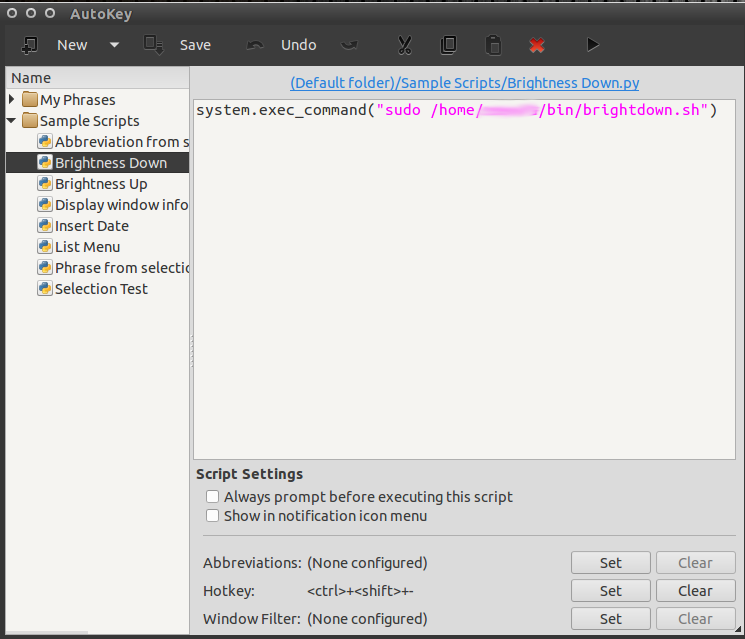Ubuntu 12.10 Screen Brightness on Sony VAIO T15
I recently picked up a new Sony VAIO T15 ultrabook laptop. A really nicely designed laptop for a good price. After repartitioning, I was able to install Ubuntu 12.10 in a dual-boot arrangement fairly easily and Ubuntu worked well out of the box. However, screen brightness controls using Gnome power manager did not work out of the box and I had to to some hacking to get at least a bit of control.
Background
Normally, the backlight brightness is controlled via the /sys/class/backlight/acpi_video0 ACPI interface. However, the Intel video driver installs its controls as /sys/class/backlight/intel_backlight. This mismatch causes Gnome power management to fail to operate on this laptop.
Short-term Solution
While there are a number of different potential solutions on the internet, I was unable to get any of those to work as-is. The closest I came was with the solution list here . However, the keyboard shortcuts didn’t seem to work. Using those scripts, I was able to roll my own solution.
Scripts
Based on the solution listed above, I created two script files.
~/bin/brightdown.sh
#!/bin/bash
curr=`cat /sys/class/backlight/intel_backlight/actual_brightness`
if [ $curr -gt 0 ]; then
curr=$((curr-610));
echo $curr > /sys/class/backlight/intel_backlight/brightness;
fi
~/bin/brightdown.sh
#!/bin/bash
curr=`cat /sys/class/backlight/intel_backlight/actual_brightness`
if [ $curr -lt 4882 ]; then
curr=$((curr+610));
echo $curr > /sys/class/backlight/intel_backlight/brightness;
fi
Note that I placed these scripts in my personal bin folder rather than /etc/acpi. Each of the scripts must also be made executable.
Root Access When Necessary
Writing to the ACPI interface in the
/sys
folder requires root access. In order to avoid having to use
su
or
sudo
with a password in order to invoke these commands, the sudoers file can be configured to allow root execution without password for
just these commands
.
Using the
visudo
command, alter the sudo file as follows:
username ALL=NOPASSWD: /home/username/bin/brightdown.sh
username ALL=NOPASSWD: /home/username/bin/brightup.sh
where username is the name of the user to be given root access without a password to those commands.
Keyboard Shortcuts
As I was unable to get the standard keyboard shortcuts to work correctly with any of the suggested, I chose instead to create my own keyboard shortcuts. After installing, autokey , I was able to create my own shortcuts for decreasing and increasing the brightness using the above scripts. In my case, I chose Ctrl+Shift+- to decrease the brightness and Ctrl+Shift++ to increase the brightness.
Using the autokey application, choose New -> Script . Enter the name “Brightness Down”. Enter the command:
system.exec_command("sudo /home/username/bin/brightdown.sh")
and set the Hotkey to Ctrl+Shift+-.
Do the same for increase the brightness, using the other script file.
Longer Term Solution
There is some hope according to Ubuntu Bug 954661 that this problem will be fixed via a kernel fix in the upcoming 13.04 Ubuntu release. If that happens, I will be able to remove these simple workaround. For the short-term though this works reasonably well. The primary missing feature is auto-dimming the screen for power savings.
